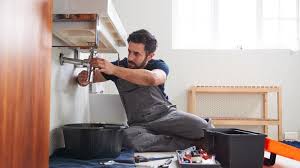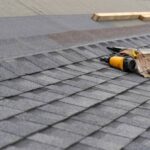Introduction
Plumbing issues are a common problem in many households, and they can be both inconvenient and costly. However, not all plumbing problems require a professional plumber. With a little knowledge and the right tools, many common plumbing issues can be fixed by homeowners themselves. In this article, we’ll explore DIY plumbing repairs that you can tackle on your own, helping you save money and maintain your home’s plumbing system.
The Importance of DIY Plumbing Repairs
Cost Savings
Hiring a plumber can be expensive, especially for simple fixes. By learning to perform DIY plumbing repairs, you can save a significant amount of money on service calls and labor costs.
Convenience
Being able to fix minor plumbing issues yourself can save time. You won’t have to wait for a professional to be available, and you can address problems as soon as they arise, preventing them from becoming more serious.
Empowerment
Learning how to perform DIY plumbing repairs empowers you as a homeowner. It gives you the confidence to handle minor issues and a better understanding of your home’s plumbing system.
Common Plumbing Tools and Materials
Essential Tools
To get started with DIY plumbing repairs, you’ll need a basic set of tools:
- Pipe Wrench: For gripping and turning pipes.
- Plunger: For unclogging drains and toilets.
- Adjustable Wrench: Versatile tool for various nuts and bolts.
- Plumber’s Tape: Also known as Teflon tape, it helps create watertight seals.
- Basin Wrench: Specially designed for tightening nuts under sinks.
- Plumber’s Putty: A sealing compound used to prevent leaks.
Materials
Stock up on common plumbing materials that are frequently needed for repairs:
- PVC Pipes and Fittings: For drain and vent lines.
- Copper Pipes and Fittings: For water supply lines.
- Pipe Insulation: To prevent pipes from freezing.
- Replacement Washers and O-Rings: For fixing leaky faucets.
Safety Equipment
Ensure safety while performing DIY plumbing repairs by using:
- Safety Goggles: To protect your eyes from debris.
- Gloves: To protect your hands from sharp edges and chemicals.
DIY Plumbing Repairs for Common Issues
Fixing a Leaky Faucet
A leaky faucet is a common issue that can waste a lot of water over time. Here’s how to fix it:
- Turn Off the Water Supply: Locate the shut-off valves under the sink and turn them off.
- Disassemble the Faucet: Use an adjustable wrench to remove the handle and expose the cartridge or valve.
- Replace Worn Parts: Inspect the cartridge or valve for worn-out parts and replace them with new ones.
- Reassemble the Faucet: Put the faucet back together and turn on the water supply to check for leaks.
Unclogging a Drain
Clogged drains are a common nuisance but can often be cleared without calling a plumber:
- Use a Plunger: For sinks and toilets, a plunger can create enough suction to dislodge the clog.
- Try a Drain Snake: For more stubborn clogs, use a drain snake to break up and remove the blockage.
- Use a Natural Cleaner: Pour a mixture of baking soda and vinegar down the drain, followed by hot water, to clear minor clogs and freshen the drain.
Repairing a Running Toilet
A running toilet can waste a lot of water. Here’s how to fix it:
- Inspect the Flapper: Open the toilet tank and check the flapper. If it’s worn or damaged, replace it.
- Check the Fill Valve: Ensure the fill valve is functioning correctly. Adjust or replace it if necessary.
- Adjust the Float: Make sure the float is set at the correct level to stop the toilet from running.
Fixing Low Water Pressure
Low water pressure can be caused by several issues:
- Clean Faucet Aerators: Unscrew the faucet aerator and clean out any debris or mineral buildup.
- Check for Leaks: Inspect pipes for leaks that could be reducing water pressure.
- Inspect the Pressure Regulator: If your home has a pressure regulator, ensure it’s set correctly. Adjust or replace it if needed.
Advanced DIY Plumbing Repairs
Replacing a Showerhead
Upgrading or replacing a showerhead is a simple DIY project:
- Remove the Old Showerhead: Use a wrench to unscrew the old showerhead.
- Clean the Threads: Clean the threads of the shower arm and apply plumber’s tape.
- Install the New Showerhead: Screw on the new showerhead and tighten it with a wrench.
Fixing a Leaky Pipe
Leaky pipes can cause significant damage if not addressed promptly:
- Turn Off the Water Supply: Locate the main shut-off valve and turn off the water.
- Cut Out the Damaged Section: Use a pipe cutter to remove the damaged section of the pipe.
- Install a Replacement Pipe: Fit a new pipe section using appropriate connectors and secure them with a pipe wrench.
Installing a New Faucet
Replacing an old faucet can refresh your kitchen or bathroom’s look:
- Turn Off the Water Supply: Shut off the water supply and disconnect the old faucet.
- Assemble the New Faucet: Follow the manufacturer’s instructions to assemble and install the new faucet.
- Reconnect the Water Supply: Turn on the water supply and check for leaks.
Preventative Plumbing Maintenance
Regular Inspections
Conduct regular inspections of your plumbing system to catch issues early:
- Check for Leaks: Inspect pipes, faucets, and fixtures for any signs of leaks.
- Inspect Drains: Ensure drains are flowing smoothly and clear of obstructions.
- Monitor Water Pressure: Keep an eye on water pressure and address any sudden changes.
Seasonal Maintenance
Perform seasonal maintenance to prevent plumbing issues:
- Winter: Insulate pipes to prevent freezing, and disconnect outdoor hoses.
- Spring: Check for leaks caused by winter weather and clean gutters.
- Summer: Inspect sprinkler systems and outdoor faucets for leaks.
- Fall: Clear leaves from gutters and ensure pipes are insulated for winter.
When to Call a Professional
Complex Repairs
While many DIY plumbing repairs are manageable, some issues require professional expertise:
- Sewer Line Problems: Issues with your sewer line should be handled by a professional.
- Major Leaks: Large leaks or burst pipes need immediate professional attention.
- Water Heater Issues: Problems with your water heater, especially gas units, should be addressed by a qualified plumber.
Safety Concerns
If you’re unsure about a repair or if it involves potentially hazardous materials, it’s best to call a professional. Safety should always be your top priority.
Permits and Regulations
Certain plumbing repairs and installations require permits and must meet local building codes. A professional plumber will ensure all work complies with regulations.
Conclusion
Summary of Key Points
Learning how to perform DIY plumbing repairs can save you money, time, and give you a sense of accomplishment. By tackling common issues like leaky faucets, clogged drains, and running toilets, you can maintain your home’s plumbing system effectively.
Call to Action
Start your journey into DIY plumbing repairs today. Gather the necessary tools, learn the basics, and gain confidence in handling minor plumbing issues yourself.
Final Thoughts
With the right knowledge and preparation, many plumbing problems can be resolved without the need for a professional. Embrace the challenge of DIY plumbing repairs and enjoy the benefits of a well-maintained home.







